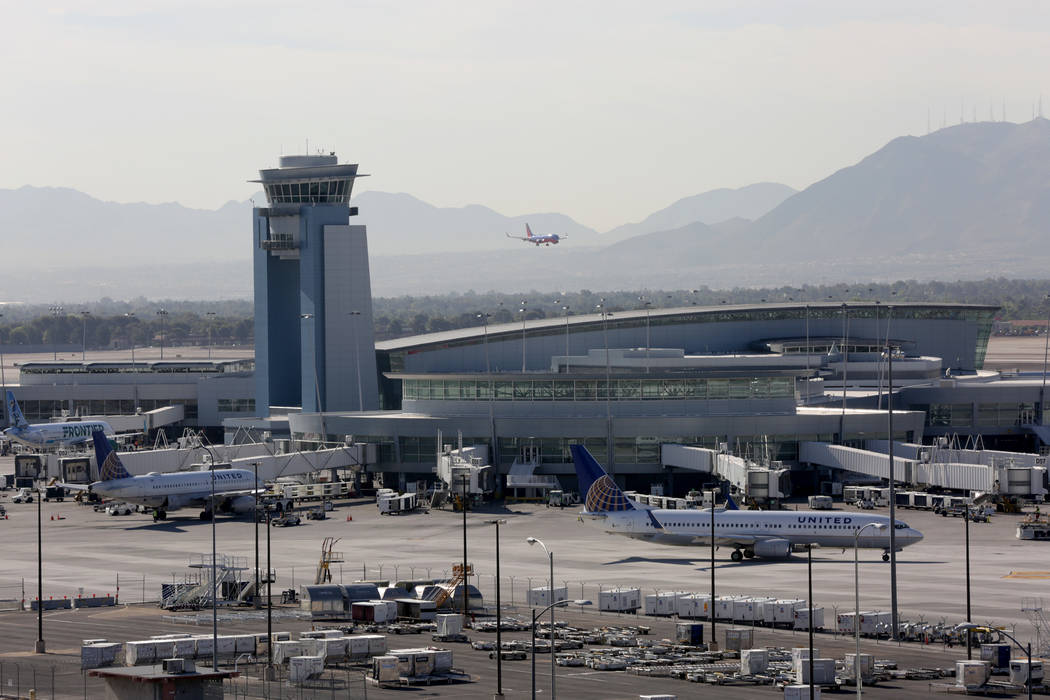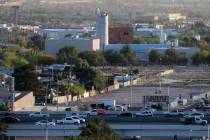FAA probing why Las Vegas airport controller became incapacitated
An air traffic controller at McCarran International Airport became incapacitated while on duty Wednesday night and has been placed on administrative leave pending an investigation.
The Federal Aviation Administration said Friday that no safety events or losses of required separation between aircraft occurred, and there were no conflicts between aircraft on the airfield. Still, Rep. Dina Titus described the incident as “deeply disturbing.”
The FAA said the controller, a woman it didn’t identify, began her shift just after 10 p.m. Her performance appeared to degrade at 11:09 p.m. and became impaired at 11:24 p.m. She then appeared unresponsive at 11:47 p.m. A second controller entered the tower cab at about 11:50 p.m. and began handling air traffic at 11:54 p.m.
“The FAA is deeply concerned by the incident, is thoroughly investigating what occurred, and is taking immediate steps to modify its overnight shift staffing policies,” the agency said in its statement.
Titus, D-Nev., a member of the House subcommittee on aviation, said she was briefed about the matter and is awaiting additional details.
“The safety of travelers is of paramount concern and I will work with the FAA and McCarran as this investigation continues to unfold,” Titus said in a statement issued late Friday.
FAA officials declined comment on whether the controller suffered a medical emergency, but medical personnel were dispatched to the tower when the incident was reported.
The National Air Traffic Controllers Association, which represents the nation’s more than 14,000 air traffic controllers, said it would cooperate with the FAA investigation.
“It is important to remember the outstanding work that is done every day by the thousands of men and women who keep the national airspace system safe,” NATCA President Paul Rinaldi said in a statement. “Our air traffic controllers in Las Vegas and around the country do an exceptional job day in and day out and demonstrate the highest professional standards.”
Two controllers were on duty at the time of the incident and one was on a break, which is allowable under FAA policy. Pilots contacted controllers at the Las Vegas approach control — a separate communications center at the base of the McCarran tower — after some of the radio exchanges. One of the approach controllers went up to the tower and alerted the tower controller who was on break of the situation.
A recording of tower communications between the tower and airline pilots at the time of the incident from LiveATC.net includes some exchanges with pilots asking the controller to repeat her instructions.
At one point, a pilot said he was “checking on the tower, something’s going on up there.”
Later in the recording, the controller’s microphone appears to be open and she can be heard coughing several times. A distant male voice asked, “Are you all right?”
Some pilots started radioing each other and indicated they were going to stay in place until there was a resolution. Eventually, a new voice began giving pilots instructions from the tower.
The nation’s air traffic control system is interdependent with multiple redundancies of systems to prevent accidents and reduce risks, according to the FAA. Pilots are trained not to land unless they have landing clearance.
The LiveATC.net recording indicates some pilots opted not to depart or communicated with other aircraft on a common radio frequency. Aircraft on the ground either held their position or proceeded cautiously while questioning the controller and communicating with each other.
Contact Richard N. Velotta at rvelotta@reviewjournal.com or 702-477-3893. Follow @RickVelotta on Twitter.























